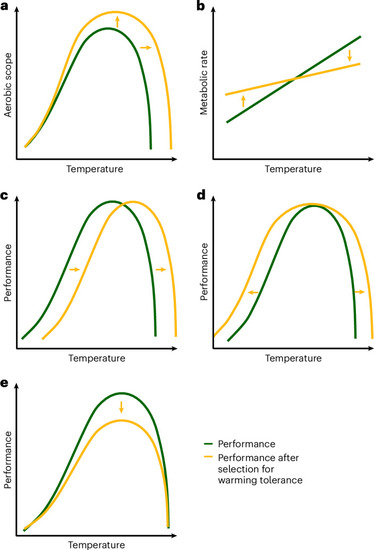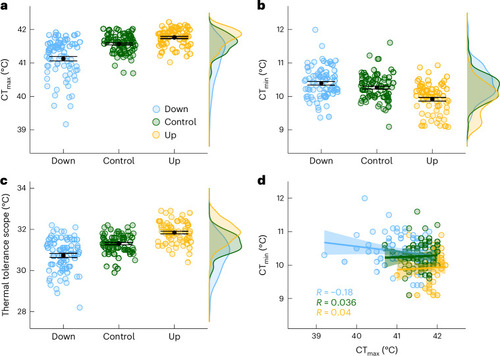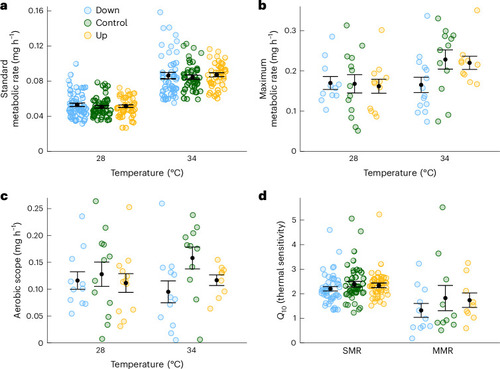- Title
-
Evolution of warming tolerance alters physiology and life history traits in zebrafish
- Authors
- Andreassen, A.H., Clements, J.C., Morgan, R., Spatafora, D., Metz, M., Åsheim, E.R., Pélabon, C., Jutfelt, F.
- Source
- Full text @ Nat Clim Chang
|
Different mechanisms may be responsible for the evolution of warming tolerance. |
|
Thermal tolerance of fish artificially selected for warming tolerance. |
|
Effects of selection treatment and temperature on metabolic rates. |
|
Effects of warming tolerance selection on life history and physiological traits. |
|
Effect of selection for acute upper thermal tolerance in Up-selected (yellow) or Down-selected (blue) fish. Effect sizes are presented as difference from the Control treatment (dashed line in the centre) with their 95% CI (error bars) obtained from models including selection treatment as fixed factor. IQR, interquartile range of occupied temperature in a thermal gradient. |





